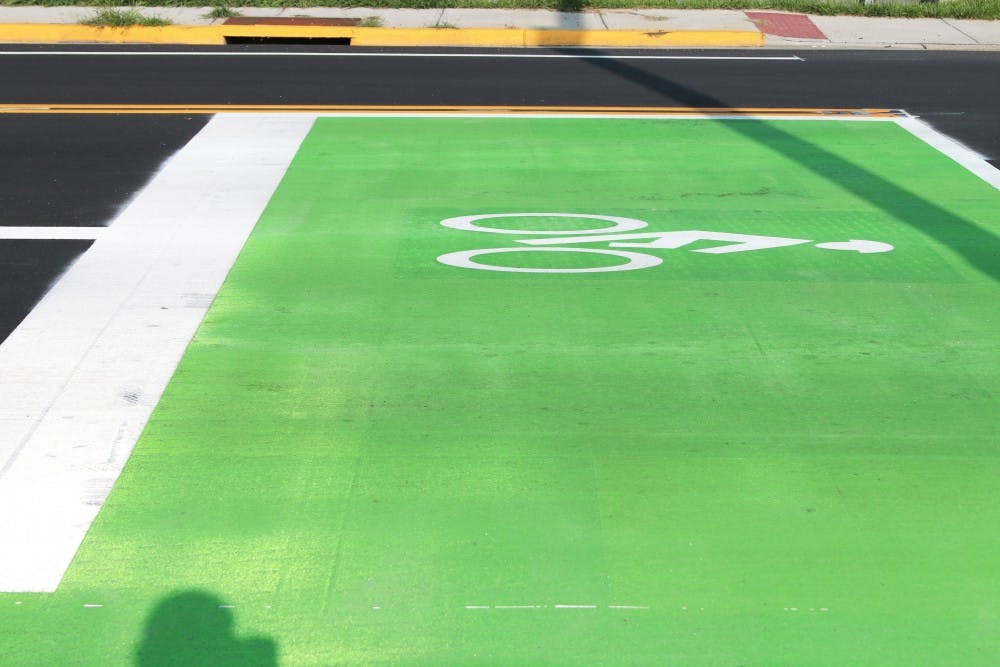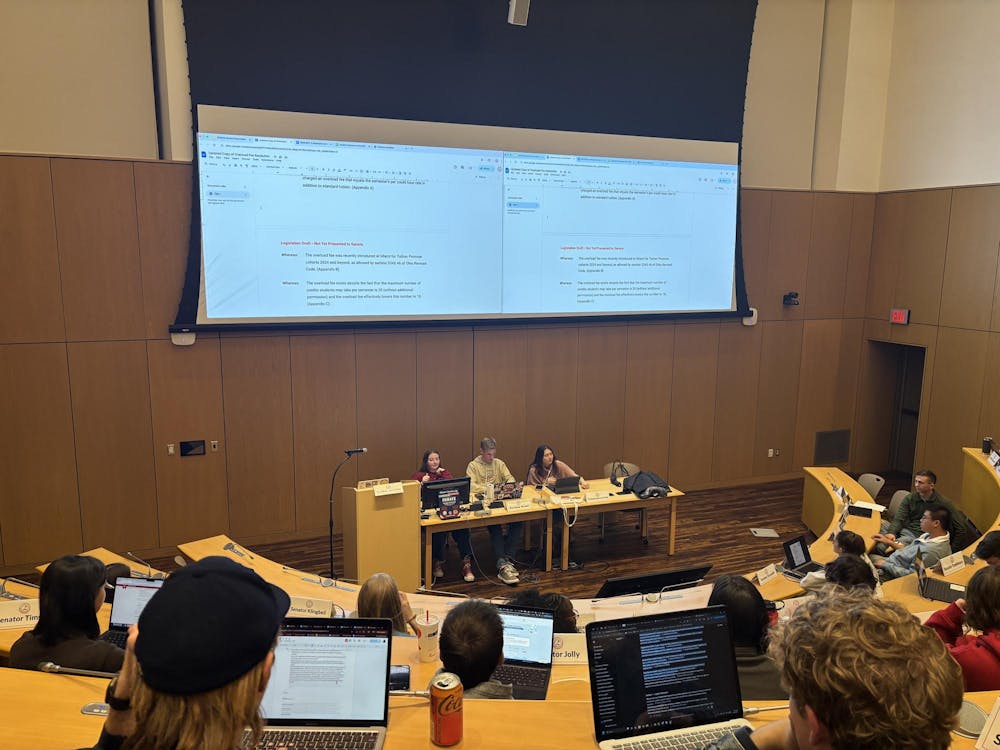Earlier this summer, the City of Oxford's streets and maintenance division installed new intersection markings on Locust Street to make the area safer and more accessible for cyclists.
The new design creates what the city calls "bike boxes," which are designated areas painted bright green where cyclists wait at signal intersections.
"The bike box comes into play in high-density traffic areas," said Michael Dreisbach, the service director of the city's service and engineering department. "[The city is] very aware of the complicated traffic patterns around Locust Street, and the bike boxes and dedicated bike lanes are there to help."
Locust Street runs in front of the shopping complex that includes Kroger, T.J. Maxx and Capitol Dry Cleaners. There are 18 cross streets and several of them do not have a clear path to the other side of the street.
There have been nine accidents involving cyclists in Oxford over the past three years, per Oxford Police Department (OPD) statistics.
According to the city's website, the intent of the boxes is to prevent accidents between bicycles and motor vehicles, particularly when bicycles go straight while motor vehicles turn right.
The boxes sit in front of the white line where motor vehicles are supposed to stop, giving cyclists a more visible space to sit and wait at red lights. Cyclists enter the boxes from the designated bike lane on the far right side of the road.
After entering the box, the motorists behind the box should stop at the white line, not crossing over into the box, even if there is no cyclist in the box. Once the light turns green, everyone goes through the intersection and motorists give the right-of-way to cyclists.
The bike boxes complement the city's "Complete Street Corridor Safety Improvement Plan." Enacted in 2014, the plan involves the creation of safer roads with more diverse options for Oxford residents to get around town. The options include things like installing dedicated bike lanes and creating better multi-use paths.
David Prytherch, city councilor and former chairman of the city's planning commission, said the conversation about safety and Locust Street, specifically, has been had before.
"The planning process to make our streets safer and more accessible has been going on for about a decade," Prytherch said. "[The plan] really set out the idea that Oxford should be safe and accessible for all modes of transportation."
Prytherch, who is also an associate professor in Miami University's geography department, specializes in urban geography and diversity. Part of his research focuses on making streets more equitable spaces. He said much of that principle can be applied in Oxford.
Enjoy what you're reading?
Signup for our newsletter
"If you think about it, one of the single largest and most important spaces in the city is the street," Pytherch said. "It's not just infrastructure, it's public space paid for and used by everyone. In the 20th century, the street became dominated by cars. But recently, cities have realized that streets need to serve broader goals. They need to be safe for all users. They should be beautiful. They should be livable."
The boxes have faced criticism from members of the community. Much of the emphasis has been directed at motor vehicles' inability to turn right on red if a cyclist is sitting in the box, waiting to go straight.
Both Prytherch and Dreisbach opted for safety over convenience.
"Our roads are here to accommodate all forms of transportation, including pedestrians and bicycles," Dreisbach said. "Hopefully motor vehicle drivers can understand how this helps bikers who are at a disadvantage on the road."
"Change is not easy, and planning is a work in progress," Prytherch said. "I think that with change, you have a goal, you implement the design that helps you get the goal, but you maybe have to deal with unintended consequences.
"Locust Street is still primarily an automobile corridor," Prytherch continued. "The reality is that people don't feel safe walking to their own library, and there will be tradeoffs."




